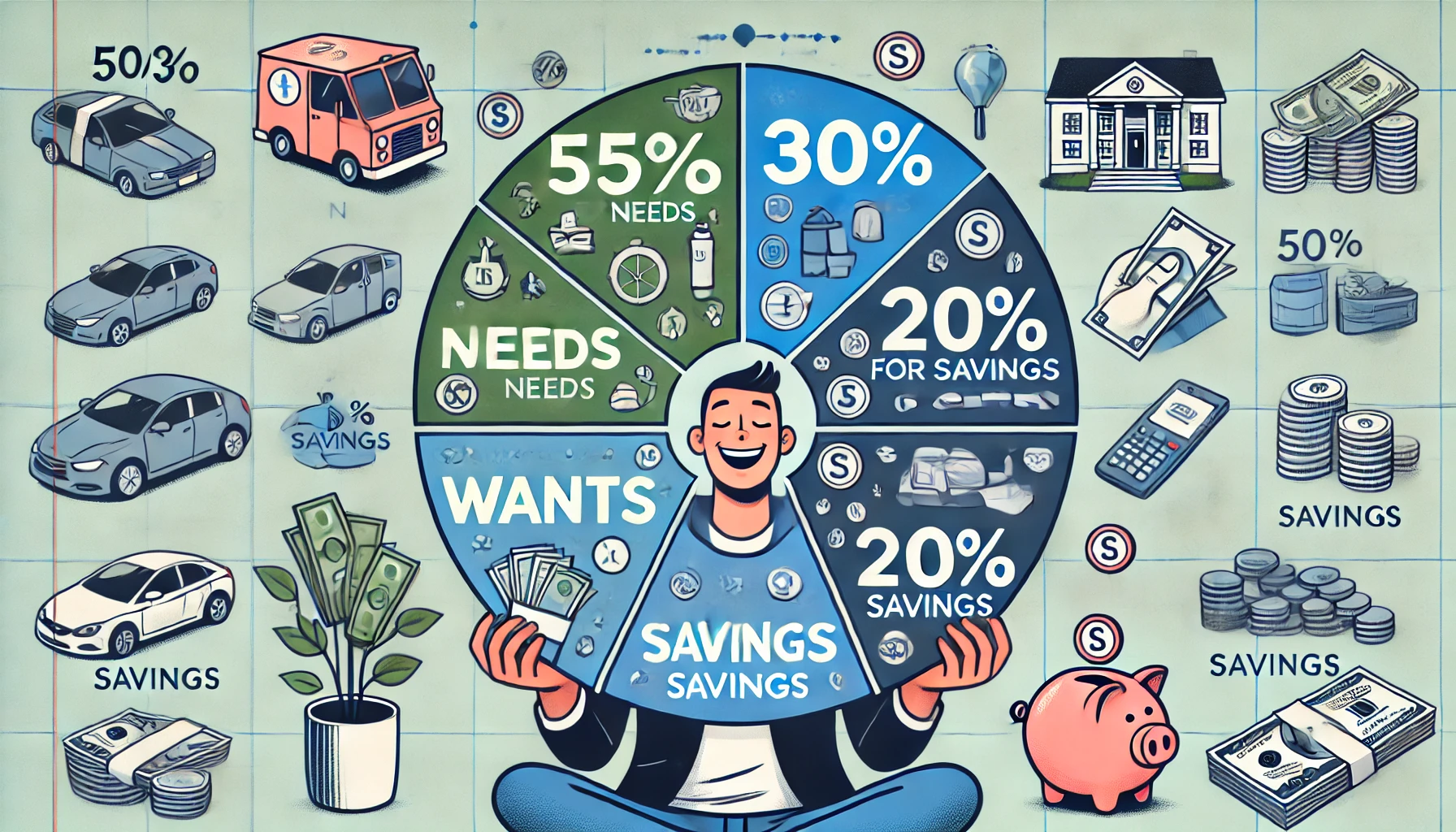Many people believe that saving money means giving up everything they enjoy—travel, hobbies, dining out, or personal goals. But the truth is, you can manage your expenses wisely, save for the future, and still enjoy life. The key is learning how to prioritize your spending so that your money works for you instead of controlling you.
By making smart financial choices, you can balance essential expenses, savings, and personal dreams without feeling deprived. In this article, you’ll learn how to organize your finances, reduce unnecessary spending, and save money—while still pursuing your dreams.
1. Identify Your Essential vs. Non-Essential Expenses
The first step to prioritizing your expenses is understanding where your money is going. Break your spending into two categories:
Essential Expenses (Needs) – Must-Haves for Survival & Stability
✅ Housing (rent, mortgage)
✅ Utilities (electricity, water, internet)
✅ Groceries and household essentials
✅ Transportation (gas, public transit, car payments)
✅ Health insurance and medical expenses
✅ Debt payments (loans, credit cards)
Non-Essential Expenses (Wants) – Lifestyle & Enjoyment
✅ Dining out and entertainment
✅ Travel and vacations
✅ Shopping (clothes, gadgets, decor)
✅ Subscription services (Netflix, gym, premium apps)
✅ Hobbies and leisure activities
📌 Example: If you’re spending $200/month on subscriptions but only saving $50/month, you may need to adjust your priorities to align with your long-term goals.
2. Use the 50/30/20 Rule to Balance Spending and Savings
A simple way to structure your finances is the 50/30/20 budgeting rule:
✅ 50% of your income for Needs – Rent, bills, groceries, essential transportation
✅ 30% for Wants – Dining out, travel, entertainment
✅ 20% for Savings & Debt Payments – Emergency fund, retirement, investments, paying off loans
📌 Example: If you earn $4,000 per month, your budget could look like this:
- $2,000 (50%) for needs
- $1,200 (30%) for wants
- $800 (20%) for savings and debt payments
If your expenses exceed these percentages, consider adjusting your spending habits or increasing your income.
3. Pay Yourself First – Automate Your Savings
Many people wait until the end of the month to save, but by then, most of their money is already spent. The solution? Pay yourself first—treat your savings like a bill that must be paid before anything else.
How to Apply It:
✅ Set up automatic transfers to a savings account every payday
✅ Allocate at least 20% of your income to savings before spending on non-essentials
✅ Keep savings in a separate account to avoid the temptation to spend it
📌 Example: If you get paid on the 1st, schedule an automatic transfer of $300 to savings on the 2nd. You’ll save money effortlessly without feeling it.
4. Align Your Spending with Your Values and Goals
Instead of cutting everything fun out of your budget, focus on spending intentionally on things that bring you joy and move you toward your dreams.
How to Apply It:
✅ Identify what truly matters to you—travel, homeownership, starting a business, early retirement
✅ Reduce spending on things that don’t align with your values
✅ Allocate more money to expenses that support your dreams
📌 Example: If your goal is to travel more, reduce spending on unnecessary shopping or dining out and put that money into a travel fund instead.
5. Reduce or Eliminate Unnecessary Expenses
Many small, untracked expenses add up over time. Review your spending regularly and cut out anything that isn’t serving you.
How to Apply It:
✅ Cancel unused subscriptions—gym memberships, streaming services, premium apps
✅ Cook at home more often instead of relying on takeout
✅ Shop with a list to avoid impulse purchases
✅ Negotiate bills (internet, insurance) to get better rates
📌 Example: If you cut $100/month from unnecessary subscriptions and dining out, that’s $1,200 saved per year—enough for a vacation or investment.
6. Use Sinking Funds for Big Expenses
Instead of being caught off guard by large expenses (car repairs, vacations, holiday shopping), plan for them with sinking funds.
How to Apply It:
✅ Set aside small amounts each month for future big expenses
✅ Open a separate savings account for each major goal (travel, home repairs, gifts)
✅ Contribute a fixed amount to these funds so you’re prepared when the time comes
📌 Example: If you want a $1,500 vacation next year, save $125 per month for 12 months—no last-minute financial stress.
7. Use the 24-Hour Rule for Non-Essential Purchases
Impulse purchases can derail your budget. The 24-hour rule helps you pause and decide if a purchase is truly worth it.
How to Apply It:
✅ Before buying anything non-essential, wait 24 hours
✅ Ask yourself: “Do I really need this? Does it fit my budget?”
✅ If you still want it after 24 hours, see if you can find a better deal
📌 Example: You see a $200 designer handbag on sale. Instead of buying it immediately, wait 24 hours. You may realize you don’t need it, or you can find a more affordable option.
8. Track Your Spending and Adjust as Needed
Keeping track of your expenses ensures you’re staying within budget and progressing toward your financial goals.
How to Apply It:
✅ Use a budgeting app (Mint, YNAB, PocketGuard) to track expenses automatically
✅ Review your spending weekly to see where you can improve
✅ Adjust your budget based on real-life changes (unexpected expenses, income increases)
📌 Example: If you notice you’re overspending on coffee by $50/month, reduce it to $25/month and redirect the savings elsewhere.
9. Reward Yourself Without Ruining Your Finances
Saving money doesn’t mean you can’t enjoy life. Set up small rewards to keep yourself motivated without blowing your budget.
How to Apply It:
✅ Celebrate financial wins (like reaching a savings goal) with an affordable treat
✅ Plan for fun spending—budget a set amount for entertainment
✅ Focus on experiences over material things
📌 Example: If you successfully save $1,000 in three months, treat yourself to a nice dinner or a fun activity under $50.
10. Keep Your Financial Goals Visible
Having a clear reminder of your goals can help you stay disciplined and motivated.
How to Apply It:
✅ Write down your top financial goals and keep them visible
✅ Use a vision board or savings tracker to see progress
✅ Remind yourself why you’re saving—it’s not about sacrifice, it’s about freedom
📌 Example: If your dream is to buy a house, keep a picture of your dream home where you’ll see it daily.
Final Thought: Smart Spending Leads to Financial Freedom
You don’t have to give up everything you love to save money. By prioritizing your expenses and aligning your spending with your goals, you will:
✅ Save money consistently without feeling restricted
✅ Reduce financial stress and avoid living paycheck to paycheck
✅ Work toward your dreams while maintaining financial security
Start today: Review your spending and make one small adjustment to align it with your financial goals! 🚀












Leave a Reply